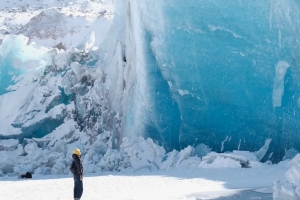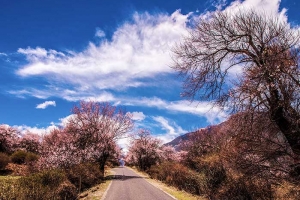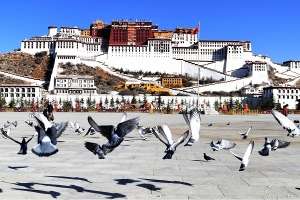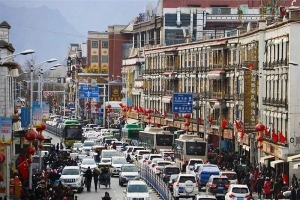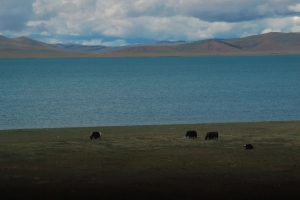Flying to Tibet has become the preferred option for many foreign visitors thanks to its speed, convenience, and overall cost-effectiveness. Unlike train journeys—which require advance booking and can be disrupted by limited seat availability—or overland tours that mandate a licensed guide and dedicated vehicle, air travel streamlines both planning and transit. In this guide, we’ll introduce you to Tibet’s main airports, detail key flight routes, and help you choose the best landing point to match your itinerary, altitude tolerance, and sightseeing priorities.
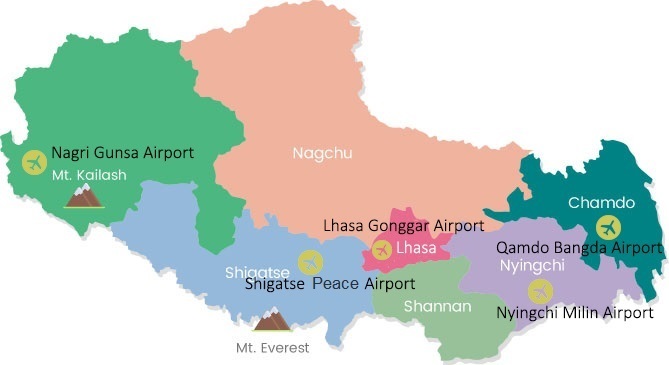
Why Fly to Tibet?
Air travel slashes the journey time dramatically. A direct flight from Chengdu to Lhasa takes just two and a half hours, compared to a two-day train ride or multi-day overland convoys. Modern jetliners on high-altitude runways provide pressurized cabins and regulated oxygen levels—vital for reducing the risk of altitude discomfort as you ascend toward the world’s “Roof of the World.”
Although airfares in China can fluctuate seasonally, flying often works out cheaper than booking premium-class train tickets or chartering private vehicles with guides. Domestic connections are plentiful, and savvy travelers can secure round-trip tickets or multi-city itineraries at competitive rates—especially if booked several weeks in advance.
All foreign nationals need a Tibet Travel Permit to enter the Tibet Autonomous Region (TAR), and the permit process is handled through mainland China. Flying forces you to transit through a Chinese city (such as Chengdu, Chongqing, or Xining), where you complete your permit pickup before boarding your Tibet-bound flight. This makes the paperwork seamless, as you can obtain your permit just in time for departure rather than coordinating it mid-trip.
Overview of Tibet’s Airports
Tibet is served by five principal civil airports, each offering unique advantages based on elevation, proximity to cultural sites, and weather patterns. Two additional airfields, rarely used by tourists, sit in remote corners of the region and may become more active in the future.
| Airport Name | Code | Elevation (m) | Nearest City | Distance to City Center |
|---|---|---|---|---|
| Lhasa Gonggar International | LXA | 3,570 | Lhasa | ~60 km |
| Nyingchi Mainling | LZY | 2,949 | Nyingchi (Bayi) | ~50 km |
| Shigatse Peace | RKZ | 3,782 | Shigatse | ~43 km |
| Qamdo Bangda | BPX | 4,334 | Chamdo (Qamdo) | ~130 km |
| Ngari Gunsa | NGQ | 4,274 | Shiquanhe (Ali) | ~50 km |
| Occasional Shigatse Tingri | — | ~4,200 | Tingri | Remote |
| Occasional Shannan Longzi | — | ~3,500 | Shannan | Remote |
Tibet’s Main Airports
1. Lhasa Gonggar International Airport (LXA)
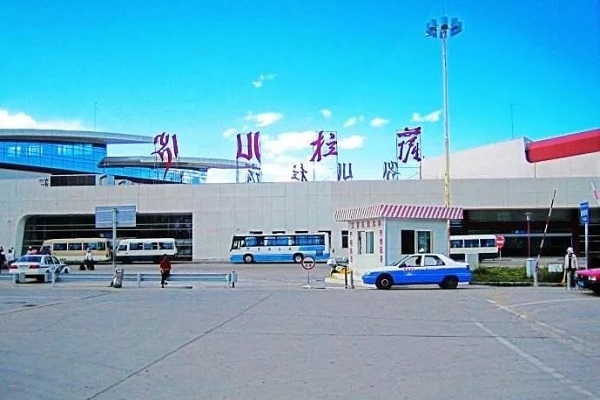
- Elevation: 3,570 m
- Runway: 4,000 × 45 m (4E class)
- Aircraft: Accommodates Boeing 747, Airbus A330/A350, etc.
- Highlights: Tibet’s primary civil aviation hub; direct services to Chengdu, Chongqing, Shangri-La, Xian, Chamdo and Kathmandu; modern terminal with oxygen-enriched waiting areas; shuttle bus and taxi links into Lhasa city (approx. 60 km).
2. Nyingchi Mainling Airport (LZY)
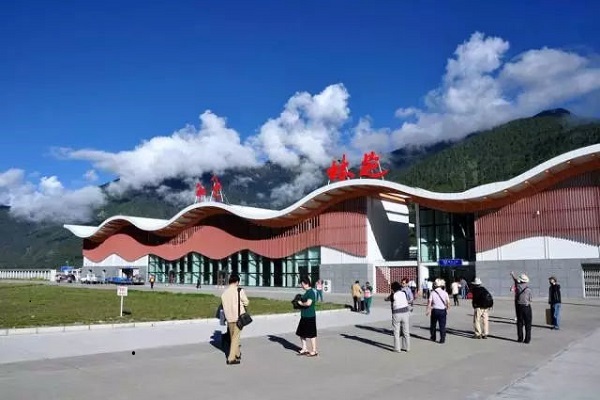
- Elevation: 2,949 m (Tibet’s lowest)
- Operation: Began 2006; among the most challenging approaches due to mountainous terrain and frequent cloud cover.
- Routes: Nonstop from Chengdu, Chongqing, Lhasa, Guangzhou; one-stop links from Beijing, Shanghai, Xian via Chengdu.
- Advantages: Natural acclimatization spot; scenic valley surrounded by pine forests; closer to Yarlung Tsangpo Grand Canyon.
3. Shigatse Peace Airport (RKZ)

- Elevation: 3,782 m
- Opened: October 30, 2010
- Location: Jiangdong Village, 43 km south of Shigatse; 250 km west of Lhasa by road (3–4 h drive).
- Routes: Daily flights from Chengdu (2 h 15 m) and Lhasa (30 m).
- Purpose: Civil–military dual use; gateway for Mount Everest, Tashilhunpo Monastery, and the Himalaya foothills.
4. Qamdo Bangda Airport (BPX)
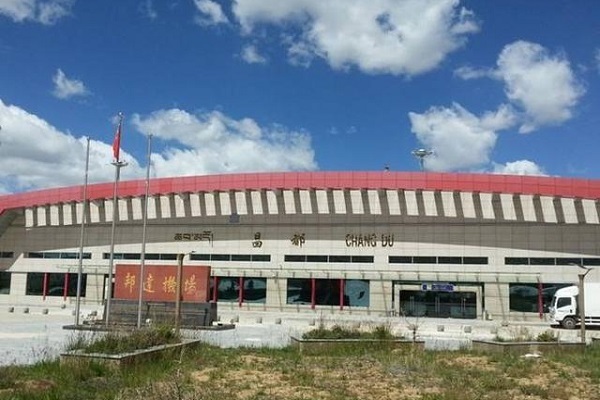
- Elevation: 4,334 m (one of the world’s highest)
- Challenges: Extreme winds (up to 30 m/s), sub-zero temperatures, 50% sea-level air density—frequent delays.
- Access: 130 km from Chamdo City, often via a high-altitude drive along the Yuqu River valley.
- Routes: Flights to Chengdu, Chongqing, Tianjin, and Fuyang; ideal for eastern Tibet explorers and visits to Ranwu Lake.
5. Ngari Gunsa Airport (NGQ)
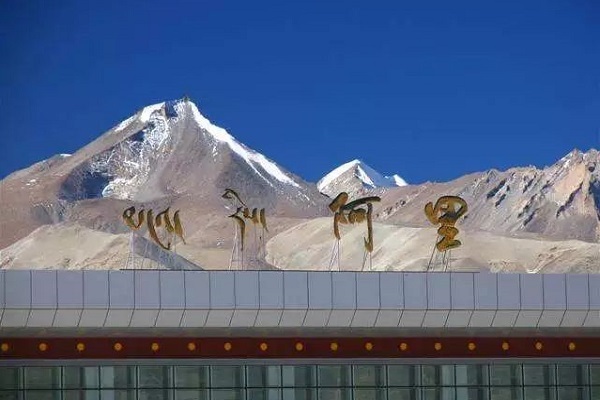
- Elevation: 4,274 m
- Runway: 4,500 × 60 m, built for plateau-spec aircraft.
- Opened: 2010; 45 km from Shiquanhe (Ali) town.
- Routes: Services from Lhasa, Urumqi, Kashgar; future plans to add more connections.
- Benefits: Dramatically cuts travel time to western Tibet’s cultural and pilgrimage sites; link from Chengdu to Ngari in under four hours.
Domestic Flight Transfer to Tibet
Because there are no direct international flights into Tibet (aside from the rare Kathmandu service), you will transit through one of China’s major cities before your final leg. The busiest gateway is Chengdu, which offers more than 15 daily flights to Lhasa. Other nonstop routes include:
- Chongqing ↔ Lhasa: ~2 h 20 m
- Xi’an ↔ Lhasa: ~3 h 10 m
- Xining ↔ Lhasa: ~2 h 30 m
- Diqing (Shangri-La) ↔ Lhasa: ~2 h 20 m
Indirect services from Beijing, Shanghai, Guangzhou, and other metropolises typically route via Chengdu, Chongqing, or Xian; these may add a brief stopover but seldom increase total journey time by more than an hour.
| Route | Flight Time | Indicative One-Way Fare (USD) |
|---|---|---|
| Chengdu ↔ Lhasa | 2 h 30 m | 305 |
| Chongqing ↔ Lhasa | 2 h 20 m | 396 |
| Xi’an ↔ Lhasa | 3 h 10 m | 319 |
| Xining ↔ Lhasa | 2 h 30 m | 262 |
| Diqing ↔ Lhasa | 2 h 20 m | 260 |
| Beijing ↔ Lhasa (via CD) | ~4 h 30 m | 478 |
| Shanghai ↔ Lhasa (via CD) | ~7 h 20 m | 480 |
| Guangzhou ↔ Lhasa (via) | ~6 h 20 m | 410 |
Choosing Your Gateway
- For acclimatization: Landing first at Nyingchi Mainling (2,949 m) eases you into the high altitude, reducing the risk of Acute Mountain Sickness before you ascend further.
- For Everest adventures: Shigatse Peace Airport sits closest to the Everest base-camp region, cutting road travel by several hours.
- For remote exploration: Ngari Gunsa opens access to west Tibet’s stark beauty—Mount Kailash, Lake Manasarovar, and the far-flung Guge Kingdom.
International Access via Kathmandu
Currently, the only direct international service to Tibet is a once-or-twice-weekly flight between Kathmandu (Nepal) and Lhasa. The 2-hour hop crosses the Himalaya ridge and drops you onto one of the highest runways in the world. Fares start around USD 510 one-way, and seats fill up fast during peak seasons (May–October). Many travelers opt to spend a few days exploring Kathmandu—visiting Durbar Square, Swayambhunath, and Patan—before heading north into Tibet.
Planning Tips for Flying into Tibet
- Book Early: Airfares surge in May–October and around Chinese New Year. Secure tickets 1–2 months ahead.
- Permit Pickup: Plan at least one full day in Chengdu (or your transit city) to obtain your Tibet Travel Permit before the flight.
- Acclimatization Stops: If your itinerary allows, break your ascent in lower-altitude Nyingchi or Xining to help your body adjust.
- Check Weather: High-plateau airports can suffer closures due to snow, fog, and high winds. Always have a buffer day built into your schedule.
- Packing Essentials: Bring medicines for altitude sickness, a warm jacket (temperatures can plummet on landing), and travel insurance that covers remote-region evacuation.
- Local Transfers: Most airports provide shuttle buses and taxis. Pre-arrange your pick-up through a local travel agent or hotel to avoid unexpected markups.
Tailoring Your Tibet Entry Point
Choosing the right airport can make or break your Tibet adventure. Lhasa’s Gonggar Airport remains the most reliable hub, yet for gradual altitude acclimatization, Nyingchi’s lower-lying runway is unmatched. Shigatse and Ngari cater to Everest seekers and pilgrims, while Qamdo appeals to off-the-beaten-path wanderers. Factor in your schedule, budget, and health considerations—and rest assured, each of these gateways offers a uniquely breathtaking introduction to Tibet’s high-altitude splendor. Whether you’re chasing the roof-of-the-world sunrise over the Jokhang Temple or embarking on a pilgrimage around Mount Kailash, flying into Tibet puts the journey within easy reach.



